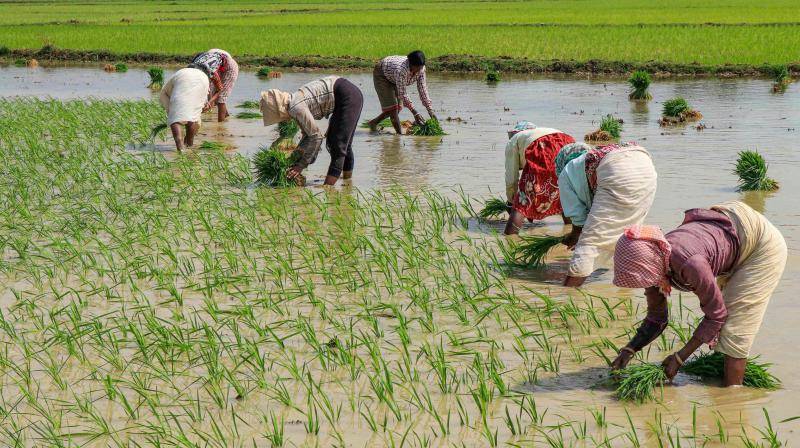
With subsoil water rapidly diminishing in Punjab, the country's grain bowl, and water-guzzler paddy cultivated on more than 30 lakh hectares during the summer (Kharif season) are considered the major reason, it's time to reconsider the water-guzzler varieties sown over decades.
According to data from the Commission for Agricultural Costs and Prices (CACP), which annually sets minimum support prices for crops grown in the country, including paddy, a kg of rice consumes 3,367 liters of water, depleting the state aquifer and threatening to turn the country into a desert.
"If this issue is not addressed, Punjab will no longer be the same. Farmers would perish in a few years since no crop can grow here without water," warned BS Dhillon, former vice-chancellor of Punjab Agricultural University (PAU), Ludhiana. He suggested giving paddy varieties a new look, acknowledging that the PAU has accomplished much but that much more remains to be done.
In terms of groundwater levels, the situation in the state is concerning since, except for three districts – Gurdaspur, Muktsar, and Pathankot – all districts are overexploited and seeing a decline in levels greater than recharge, with an average loss of at least 50 cm.
"It's more than a metre per year in certain places," said Gopal Krishan, a scientist at the National Institute of Hydrology in Roorkee. Central Punjab has been hit the worst, with 109 of the state's 138 blocks turning into black zones.
Rice breeder GS Khush, an alumnus of the PAU and based in the USA, had also raised concern over the paddy scenario in Punjab, recommending no free power to 14 lakh agriculture tubewells in the state.
Paddy sowing has been postponed until June 15, with the state enacting a law prohibiting it before that date. Experts, on the other hand, believe it should be pushed out to June 30 or perhaps the first week of July.
Dhillon noted that types with a development time of 162 days, such as PUSA44, should be stopped immediately and the seeds should be destroyed. Farmers may utilize the same variety of paddy for several years since it is a self-pollinating crop.
"We need to reverse this trend. Paddy producers should mix varieties from season to season to avoid disease, according to Gurjeet Singh Mangat, an assistant director at the PAU's research crop improvement department and a rice breeder.
















